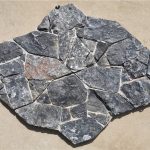Introduction:
Scandinavian cultured stone is a fascinating architectural material that has been used for centuries in the Nordic countries. With its unique characteristics and unparalleled beauty, this stone has captured the hearts of designers, architects, and homeowners around the world. In this article, we will delve into the history, characteristics, uses, and benefits of Scandinavian cultured stone, exploring why it continues to be a popular choice for modern construction projects.
History of Scandinavian Cultured Stone:
The history of Scandinavian cultured stone dates back to ancient times when the Nordic people used natural stones to build their homes, churches, and other structures. Over the centuries, these traditional building techniques evolved, leading to the development of a distinctive style characterized by the use of locally-sourced stone and a focus on craftsmanship and durability.
One of the key turning points in the history of Scandinavian cultured stone was the emergence of the Arts and Crafts movement in the late 19th century. This movement, which emphasized the value of handmade craftsmanship and natural materials, had a profound influence on Scandinavian architecture and design. Architects and builders began to explore new ways of working with stone, leading to the development of innovative techniques for shaping, cutting, and finishing stone surfaces.
Characteristics of Scandinavian Cultured Stone:
Scandinavian cultured stone is known for its unique characteristics that set it apart from other types of stone. One of the most distinctive features of this stone is its natural beauty, which is characterized by subtle variations in color, texture, and veining. Each piece of Scandinavian cultured stone is a work of art in itself, with its own distinct patterns and markings that tell a story of the earth's geological history.
Another key characteristic of Scandinavian cultured stone is its durability and strength. Thanks to its dense composition and high quality, this stone is able to withstand the harshest weather conditions, making it an ideal choice for exterior applications such as facades, walls, and paving. In addition, Scandinavian cultured stone is highly resistant to moisture, heat, and fire, making it a low-maintenance and long-lasting building material.
Uses of Scandinavian Cultured Stone:
Scandinavian cultured stone is a versatile material that can be used in a wide range of architectural applications. From traditional buildings to contemporary structures, this stone adds a touch of elegance and sophistication to any project. Some of the most common uses of Scandinavian cultured stone include:
1. Facades: The natural beauty and durability of Scandinavian cultured stone make it an excellent choice for building facades. Whether used as cladding for an entire building or as an accent material for specific architectural elements, such as columns or cornices, this stone adds a timeless appeal to any facade.
2. Walls: Scandinavian cultured stone is often used to create interior and exterior walls that exude warmth and character. Whether installed in a traditional dry-stack style or with mortar joints for a more formal look, this stone can transform any space into a cozy retreat.
3. Paving: In outdoor spaces such as patios, walkways, and driveways, Scandinavian cultured stone can be used to create durable and visually appealing surfaces. With its natural texture and slip-resistant properties, this stone is an ideal choice for high-traffic areas that require both beauty and functionality.

4. Fireplaces: The rich colors and textures of Scandinavian cultured stone make it a popular choice for fireplace surrounds and hearths. Whether used in a rustic cabin or a modern living room, this stone adds a touch of elegance and warmth to any fireplace design.
Benefits of Scandinavian Cultured Stone:
There are numerous benefits associated with using Scandinavian cultured stone in architectural projects. Gravel-filled stepping stones for added texture of the key advantages of this stone include:
1. Aesthetics: Scandinavian cultured stone is renowned for its timeless beauty and natural charm. With its unique colors, textures, and patterns, this stone adds a sense of elegance and sophistication to any building or space.
2. Durability: Thanks to its dense composition and high quality, Scandinavian cultured stone is incredibly durable and long-lasting. It can withstand the elements and maintain its appearance for decades, making it a cost-effective choice for building exteriors and other applications.
3. Low Maintenance: Unlike natural stone, which requires regular sealing and maintenance, Scandinavian cultured stone is relatively low maintenance. Simply cleaning the surface with water and mild soap is usually sufficient to keep it looking its best.
4. Sustainability: Many manufacturers of Scandinavian cultured stone are committed to sustainable practices, including using locally-sourced materials and minimizing waste during production. By choosing this stone, architects and designers can support environmentally friendly building practices.
Conclusion:
Scandinavian cultured stone is a truly exceptional building material that combines natural beauty, durability, and sustainability. With its rich history, unique characteristics, versatile uses, and numerous benefits, this stone continues to be a popular choice for architects, designers, and homeowners who appreciate quality craftsmanship and timeless elegance. Whether used in facades, walls, paving, or fireplaces, Scandinavian cultured stone adds a touch of Nordic charm to any architectural project, creating spaces that are as functional as they are beautiful.
